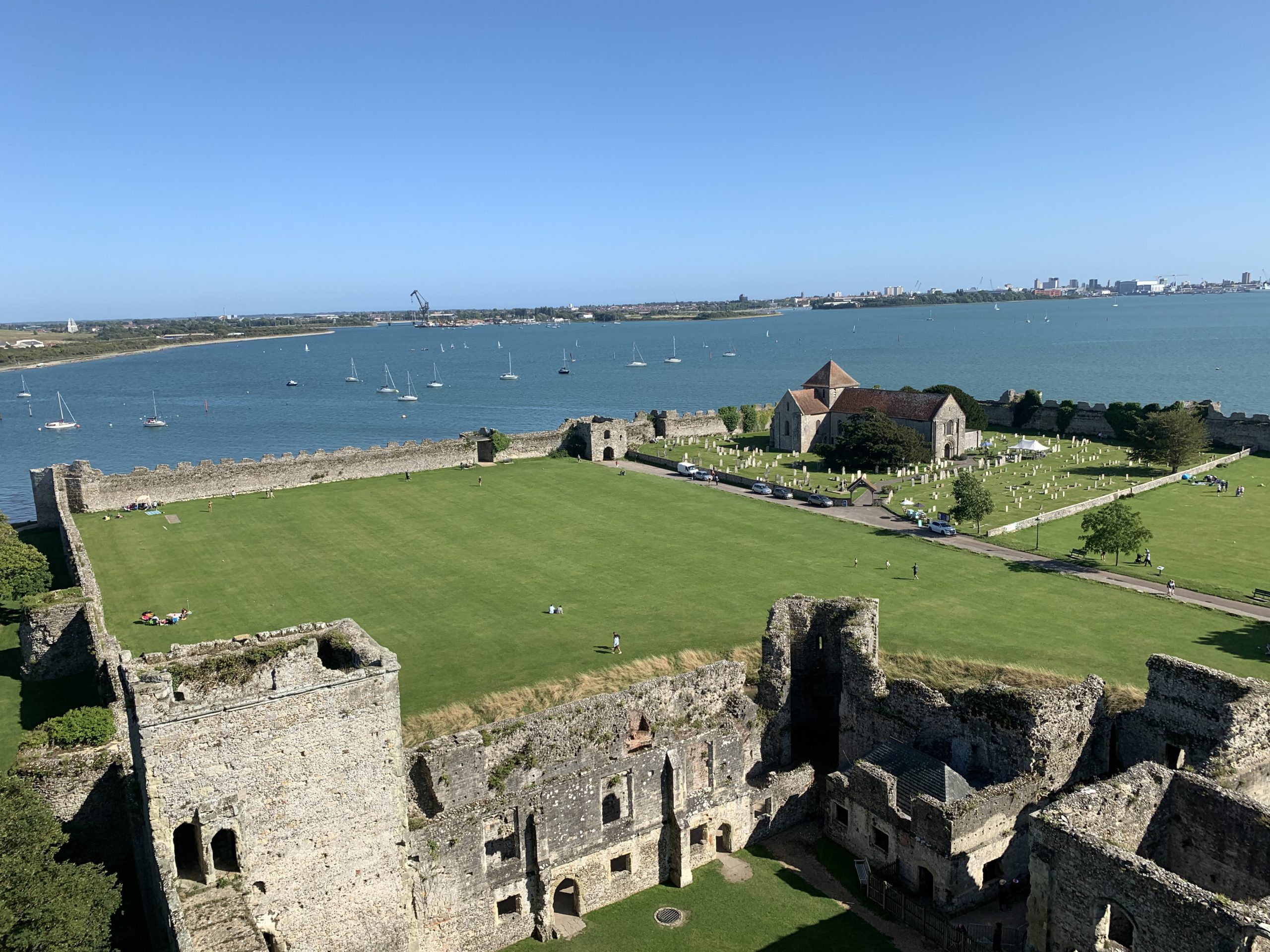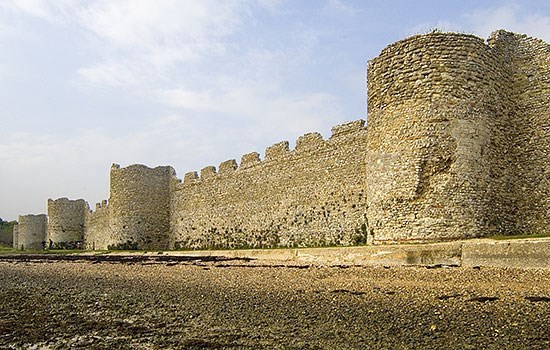Portus Adurni, built during the late 3rd century CE in Roman Britain, is a masterpiece of ancient military engineering and a crucial historical site. Known today as Portchester Castle, this well-preserved Saxon Shore fort demonstrates the Romans’ strategic prowess and architectural ingenuity, reflecting the transition from antiquity to the medieval period.
Architectural Marvel: A Fortress Built to Last
Spanning 9 acres, Portus Adurni was constructed with imposing walls of 20 feet in height and 10 feet thick, using coursed flint and limestone. These formidable defenses, complemented by bastion towers, were engineered to withstand prolonged sieges and protect the coastline from Saxon maritime incursions. Strategically located near Portsmouth Harbor, the fort served as a surveillance and control point for southern Britain’s waters. The enduring quality of these structures highlights the Romans’ expertise in durable and functional design, many elements of which were repurposed in later centuries.

A Timeline of Evolution
Roman Era
Portus Adurni was part of a network of Saxon Shore forts designed to safeguard the Roman Empire’s most vulnerable coastal areas. Though primarily a military installation, archaeological evidence suggests its use continued after Rome’s withdrawal, indicating its strategic importance.
Anglo-Saxon Period
The fort was repurposed as a high-status settlement, featuring modifications like a great hall and residential towers. This phase illustrates the adaptability of Roman architecture to meet evolving societal needs.

Medieval Transformation
Post-Norman Conquest, the fortress became Portchester Castle, with the Roman walls forming the outer bailey. Additions such as a central keep and new defensive features integrated seamlessly with the ancient structure. During this period, the site served as a royal residence and a stronghold, hosting monarchs like Henry II and Edward III.
Modern Uses
In the 17th and 18th centuries, Portchester Castle was adapted as a prison, particularly during the Napoleonic Wars. This marked another chapter in its varied history, highlighting its continued functionality across eras.
Cultural and Historical Legacy
Portus Adurni is more than a military relic; it is a living archive of historical transitions. Its survival demonstrates the resilience of Roman engineering, while its reuse underscores the evolving relationship between architecture and society. Managed today by English Heritage, Portchester Castle offers an invaluable lens through which to view Roman and medieval history. Visitors can explore its Roman walls, medieval additions, and archaeological findings, bridging the gap between the ancient and modern worlds.

A Timeless Symbol of Ingenuity
Portus Adurni stands as a tribute to the Romans’ architectural skill and strategic vision. From repelling Saxon raiders to hosting royal courts and prisoners, its walls encapsulate over 1,700 years of history, making it one of the most significant Roman-era fortresses north of the Alps. For more detailed exploration and visiting information, consult resources like Heritage Daily and English Heritage, which preserve and share the rich history of this remarkable site.

